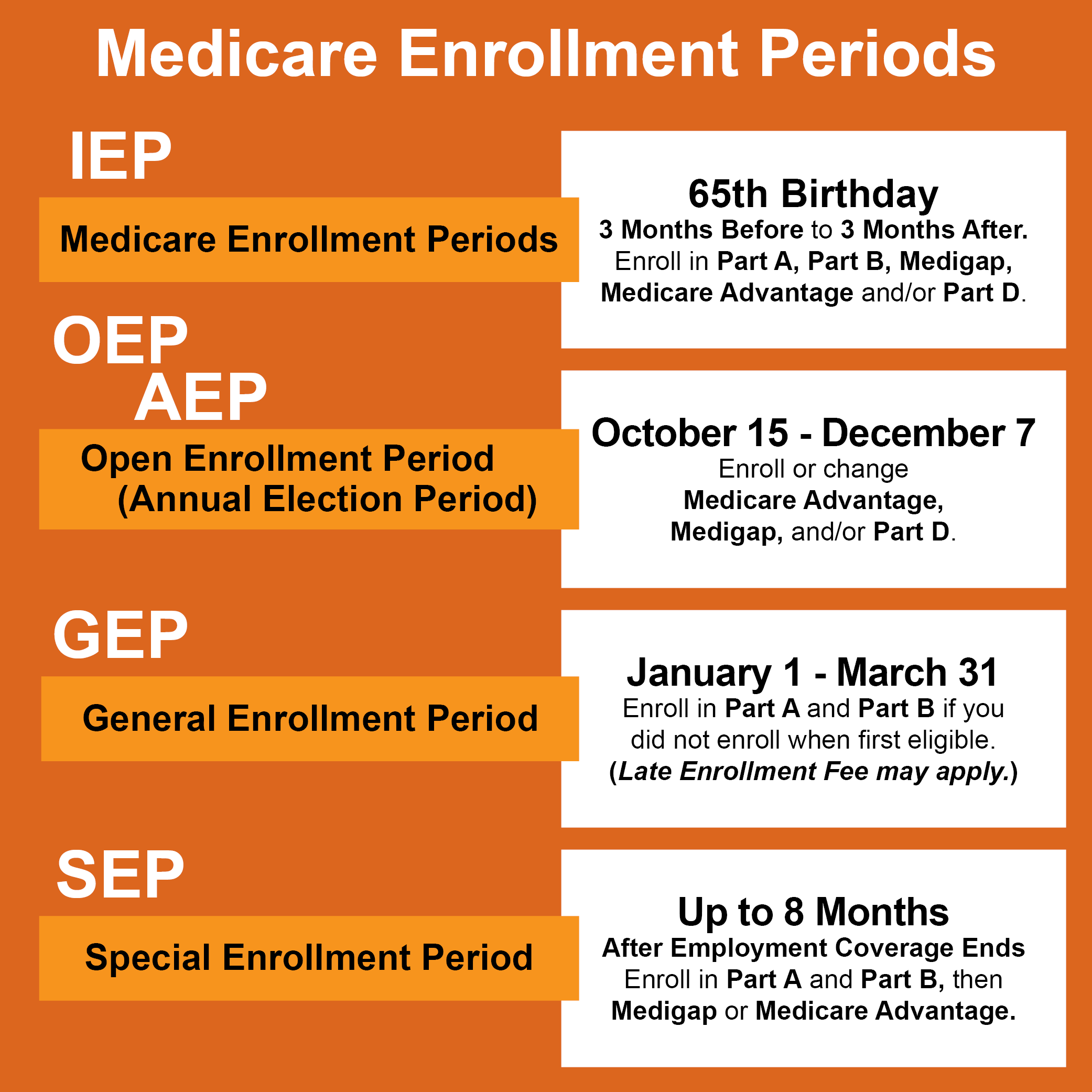Vincent Thrasher, the pioneering founder of Over65InsuranceOptions, has an impressive 20-year tenure in the insurance industry. His in-depth expertise spans the entire spectrum of senior...Read more
Medicare is a federal health insurance program for people aged 65 years or older, certain younger people with disabilities, and individuals with End-Stage Renal Disease (ESRD). To enroll in Medicare, you must meet certain eligibility criteria and follow specific enrollment procedures. In this article, we will discuss what Medicare enrollment is, who is eligible, and how to enroll in Medicare.
Enrolling in Medicare is an essential step towards ensuring that you have access to affordable healthcare services in your retirement years. Understanding Medicare enrollment can be overwhelming, but this article will guide you through the process and help you make informed decisions about your healthcare coverage. So, let’s dive into the world of Medicare enrollment and explore your options!

Understanding Medicare Enrollment
Medicare enrollment is a critical process for individuals who are either turning 65 or have a disability. It is a government-sponsored healthcare program that provides medical insurance to eligible Americans. However, enrolling in Medicare can be confusing, and it’s essential to understand the different parts of Medicare coverage, the enrollment periods, and the requirements to ensure you get the healthcare coverage you need.
Part A: Hospital Insurance
Medicare Part A covers inpatient hospital stays, hospice care, skilled nursing facilities, and some home healthcare services. Most people do not have to pay a premium for Part A because they have paid Medicare taxes for at least ten years. However, if you didn’t pay taxes, you can still enroll in Part A by paying a premium.
To enroll in Part A, you must be 65 or older, a U.S. citizen, or a permanent legal resident who has lived in the United States for at least five years.
Benefits of Part A
- Covers inpatient hospital care with no out-of-pocket cost
- Covers skilled nursing facility care after a hospital stay
- Covers hospice care for people with terminal illnesses
- Covers limited home health services
Part A Vs. Other Coverage
- Covers inpatient hospital care with no out-of-pocket cost
- Covers skilled nursing facility care after a hospital stay
- Covers hospice care for people with terminal illnesses
- Covers limited home health services
Part B: Medical Insurance
Medicare Part B covers doctor visits, outpatient care, preventive services, and medical equipment like wheelchairs and walkers. Part B requires a monthly premium, and the cost depends on your income and when you enroll. If you don’t enroll in Part B when you’re first eligible, you may have to pay a late enrollment penalty.
To enroll in Part B, you must be 65 or older, a U.S. citizen, or a permanent legal resident who has lived in the United States for at least five years.
Benefits of Part B
- Covers doctor visits and outpatient care
- Covers preventive services like screenings and vaccinations
- Covers durable medical equipment like wheelchairs and walkers
- Covers some mental health services
Part B Vs. Other Coverage
- Covers more preventive services than other insurance plans
- Covers durable medical equipment with no or low out-of-pocket cost
- Covers some mental health services
- May have higher premiums than other insurance plans
Part C: Medicare Advantage
Medicare Advantage, also known as Part C, is a type of Medicare plan offered by private insurance companies. Medicare Advantage plans combine Parts A and B and often include prescription drug coverage. Some plans offer additional benefits like dental and vision care. You must have Parts A and B to join a Medicare Advantage plan.
To enroll in a Medicare Advantage plan, you must live in the plan’s service area and have both Parts A and B.
Benefits of Medicare Advantage
- Often includes prescription drug coverage
- May offer additional benefits like dental and vision care
- May have lower out-of-pocket costs than Original Medicare
- May offer coordinated care for people with chronic conditions
Medicare Advantage Vs. Other Coverage
- May offer more benefits than other insurance plans
- May have lower out-of-pocket costs than other insurance plans
- May require you to use a specific network of doctors and hospitals
- May limit your ability to see specialists without a referral
Part D: Prescription Drug Coverage
Medicare Part D covers prescription drugs and is offered by private insurance companies. You must have Parts A and B to join a Part D plan. Part D premiums vary by plan and income.
To enroll in Part D, you must live in the plan’s service area and have both Parts A and B.
Benefits of Part D
- Covers prescription drugs
- Helps lower the cost of medications
- May offer additional coverage for certain drugs
- May offer mail-order prescriptions for convenience
Part D Vs. Other Coverage
- Covers prescription drugs
- May offer more coverage for certain drugs than other insurance plans
- May have higher premiums than other insurance plans
- May have a coverage gap known as the “donut hole”
Enrollment Periods
Enrollment in Medicare is limited to certain periods. The Initial Enrollment Period (IEP) is a seven-month period that begins three months before your 65th birthday and ends three months after your birthday. If you’re eligible for Medicare due to a disability, your IEP is seven months, beginning three months before your 25th month of disability.
The Annual Enrollment Period (AEP) is from October 15th to December 7th. During this time, you can change your Medicare coverage or enroll in a new plan. You can also make changes to your Medicare Advantage or Part D plan during the Open Enrollment Period (OEP), which is from January 1st to March 31st.
Conclusion
Medicare enrollment is a crucial process that requires careful consideration of your healthcare needs. Understanding the different parts of Medicare coverage, the enrollment periods, and the requirements will help you make informed decisions about your healthcare coverage. Whether you’re turning 65 or have a disability, enrolling in Medicare can provide you with the peace of mind that comes with having quality healthcare coverage.
Contents
Frequently Asked Questions
1. What is Medicare Enrollment?
Medicare enrollment is the process of signing up for Medicare, a federal health insurance program that provides coverage to people aged 65 and older, as well as to those who have certain disabilities or end-stage renal disease. Enrollment in Medicare is mandatory for some people and voluntary for others.
When you first become eligible for Medicare, you have a seven-month period to enroll. This period includes the three months before your 65th birthday, the month of your birthday, and the three months after your birthday. If you miss this initial enrollment period, you may be subject to penalties and may have to wait until the next enrollment period to sign up.
2. Who is eligible for Medicare?
To be eligible for Medicare, you must be a U.S. citizen or permanent legal resident who is 65 years of age or older, or have a disability or end-stage renal disease. If you have worked and paid taxes for a certain number of years, you may also be eligible for free Medicare Part A coverage.
If you are not yet 65 and do not have a disability or end-stage renal disease, you may still be eligible for Medicare if you have certain chronic conditions, such as amyotrophic lateral sclerosis (ALS) or permanent kidney failure requiring dialysis or a transplant.
3. What are the different parts of Medicare?
Medicare is divided into four parts: Part A, Part B, Part C, and Part D.
Part A provides coverage for inpatient hospital care, skilled nursing care, hospice care, and home health care.
Part B covers outpatient services, such as doctor visits, preventive care, and medical equipment.
Part C, also known as Medicare Advantage, is an alternative to traditional Medicare and combines Parts A and B, as well as often including additional benefits such as prescription drug coverage and dental or vision care.
Part D provides prescription drug coverage.
4. When can I make changes to my Medicare coverage?
You can make changes to your Medicare coverage during the annual enrollment period, which runs from October 15 to December 7 each year. During this time, you can switch from original Medicare to a Medicare Advantage plan, switch from one Medicare Advantage plan to another, switch from a Medicare Advantage plan back to original Medicare, or change your Part D prescription drug coverage.
Outside of the annual enrollment period, you can make changes to your coverage if you experience certain life events, such as moving to a new area or losing your employer-sponsored health insurance.
5. How do I enroll in Medicare?
To enroll in Medicare, you can visit the Social Security Administration website or visit a local Social Security office. You can also enroll by calling Social Security or by filling out a paper application and mailing it to the Social Security Administration. If you are already receiving Social Security benefits, you will be automatically enrolled in Medicare when you become eligible.
In conclusion, Medicare Enrollment is a crucial process that every eligible individual must undertake to access healthcare benefits provided by the government. The enrollment process can be done online, over the phone, or in-person, but it’s essential to understand the different enrollment periods to avoid penalties and delays.
Enrolling in Medicare can be overwhelming, but it’s essential to understand the different parts of Medicare, including Part A, B, C, and D, to make informed decisions. It’s also crucial to review your healthcare needs and choose a plan that suits your needs and budget.
In summary, Medicare Enrollment offers a wide range of healthcare benefits to eligible individuals, including hospital insurance, medical insurance, prescription drug coverage, and Medicare Advantage plans. By taking the time to understand the enrollment process and different plans, you can access quality healthcare and ensure peace of mind for you and your loved ones.
Vincent Thrasher, the pioneering founder of Over65InsuranceOptions, has an impressive 20-year tenure in the insurance industry. His in-depth expertise spans the entire spectrum of senior insurance, encompassing Medicare, Medigap, long-term care insurance, life insurance, and dental, vision, and hearing insurance. Vincent's unwavering passion for guiding seniors through the intricate insurance landscape and crafting customized solutions to address their individual needs has earned Over65InsuranceOptions an esteemed reputation as a dependable ally for seniors nationwide.
More Posts

